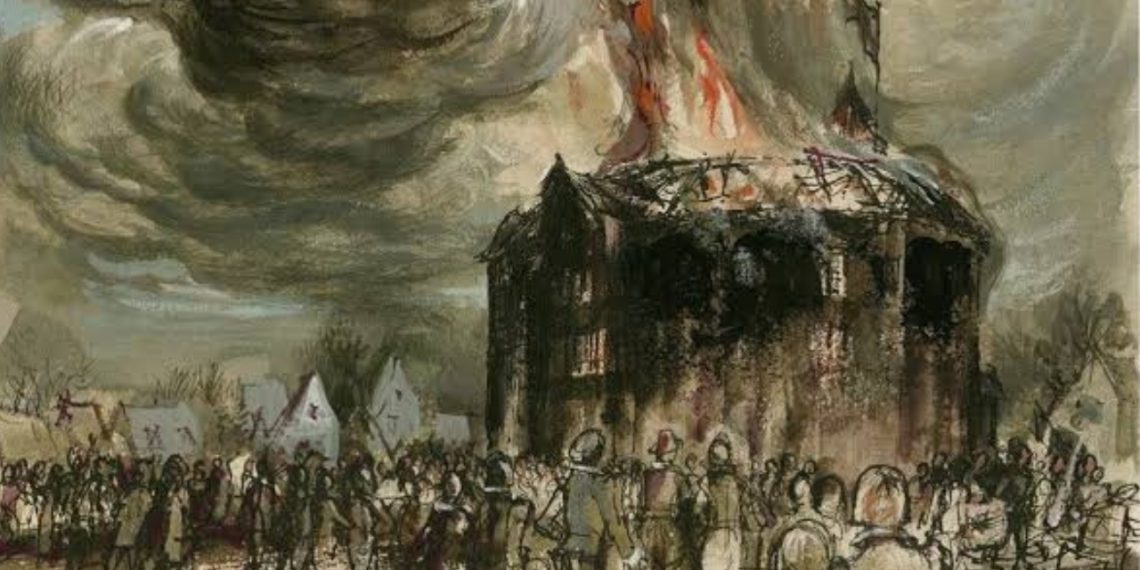On June 29, 1613, the iconic Globe Theatre, one of Shakespeare’s most famous playhouses, was tragically destroyed by fire during a performance of Henry VIII.
The disaster unfolded when a theatrical cannon, used for special effects in the play, misfired. The cannon, which did not use cannonballs but instead employed gunpowder secured by wadding, accidentally launched a piece of burning wadding into the theatre’s thatched roof.
The highly flammable material ignited the roof, and the fire quickly spread to the wooden beams of the structure.
Within moments, the entire theatre was engulfed in flames. Despite the swift destruction of the building, the fire’s impact was surprisingly limited in terms of casualties, with only one recorded injury.
This was a remarkable outcome, considering how rapidly the fire spread and the large number of people in attendance.
However, the damage was irreparable, and the original Globe Theatre was completely destroyed in less than an hour.
The fire marked a significant chapter in the history of Elizabethan theatre, underscoring the risks associated with pyrotechnic effects in early performances.
The Globe Theatre, built primarily from wood and topped with a thatched roof, was highly vulnerable to such accidents.
In the aftermath, the theatre was rebuilt the following year, but the fire of 1613 remains a notable event in the legacy of both the Globe and Shakespeare’s theatrical world.














